Derek Carr Isn’t As Good As You Think

Want to know the really good news, Raiders fans? Not only is your team 6-2 and hosting its first network prime-time game since 2003, it’s 6-2 despite the fact that quarterback Derek Carr hadn’t played particularly well until last Sunday.
After throwing for four touchdowns and 513 yards in last week’s overtime win against the Bucs, Carr’s name is being floated in MVP discussions. But that’s only because people feel they’re supposed to do that whenever a QB on a winning team has big numbers. The Raiders are tied for first, and Carr has 17 touchdowns and just three interceptions this season.
The coronation seems natural, but the film tells a different story. What’s been apparent almost every week (except last Sunday) is that Carr’s accuracy is improving but still isn’t always commensurate with his considerable arm talent. Uneven drop-back footwork is often to blame. Carr can sometimes get away with it because he is a fluid, athletic thrower who can sling fastballs or float touch passes. But too often he misses on many routine throws.
• PETER KING’S MMQB: The Raiders Are Scary and Good
Let’s be clear before the Twitter rampages ensue: all of this analysis falls under the banner of The Higher Standard that Carr should be held to. He’s gifted enough to one day become a top-tier QB, but he’s not there yet. He must sharpen his play.
Also apparent on film: there are snaps almost every week when Carr doesn’t read the field clearly or patiently. The pace with which he makes his reads can be erratic. At times Carr goes too fast, abandoning good reads before open receivers materialize. Other times he stays on bad reads too long, which leads to other open receivers being missed. These are critical mistakes that cannot be captured by any statistical metric, no matter how “advanced.” And they’re the types of mistakes that you almost never see from a Tom Brady, a Drew Brees or a Ben Roethlisberger.
A good (and glaring) example came two weeks ago, at Jacksonville, on the first play following a muffed punt recovery by the Raiders.
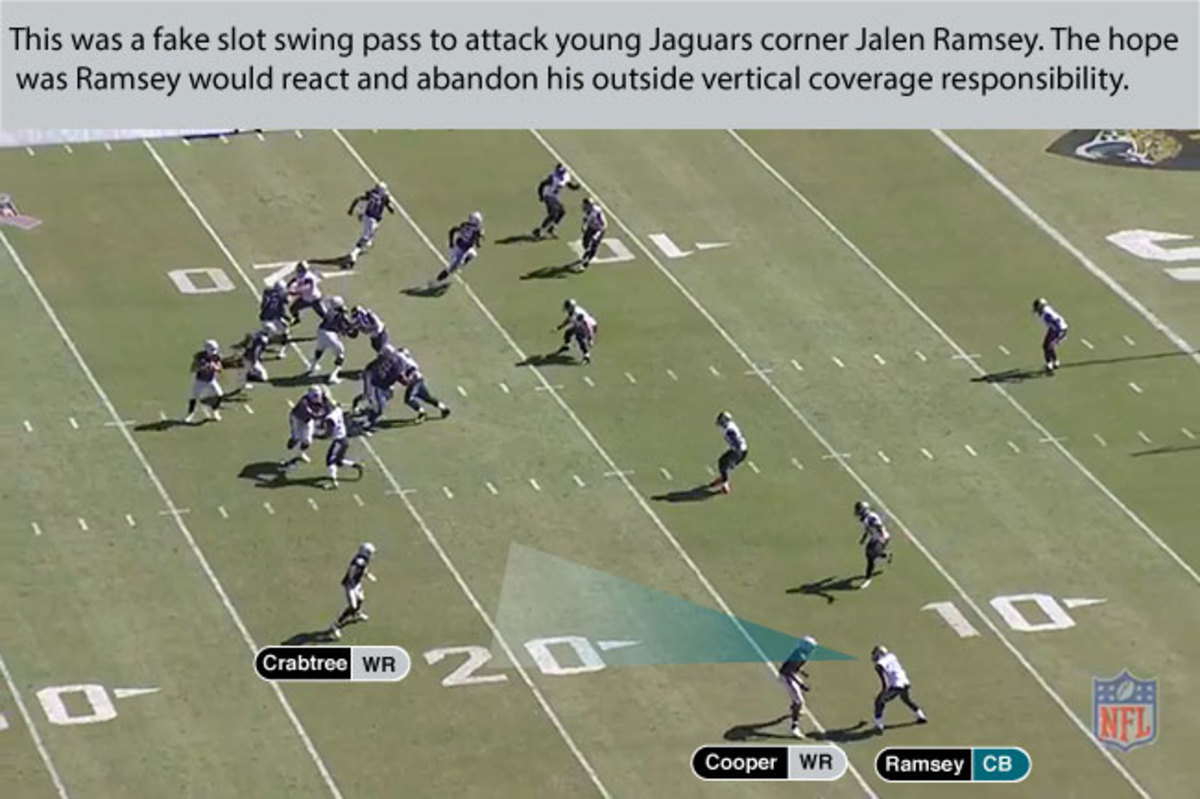
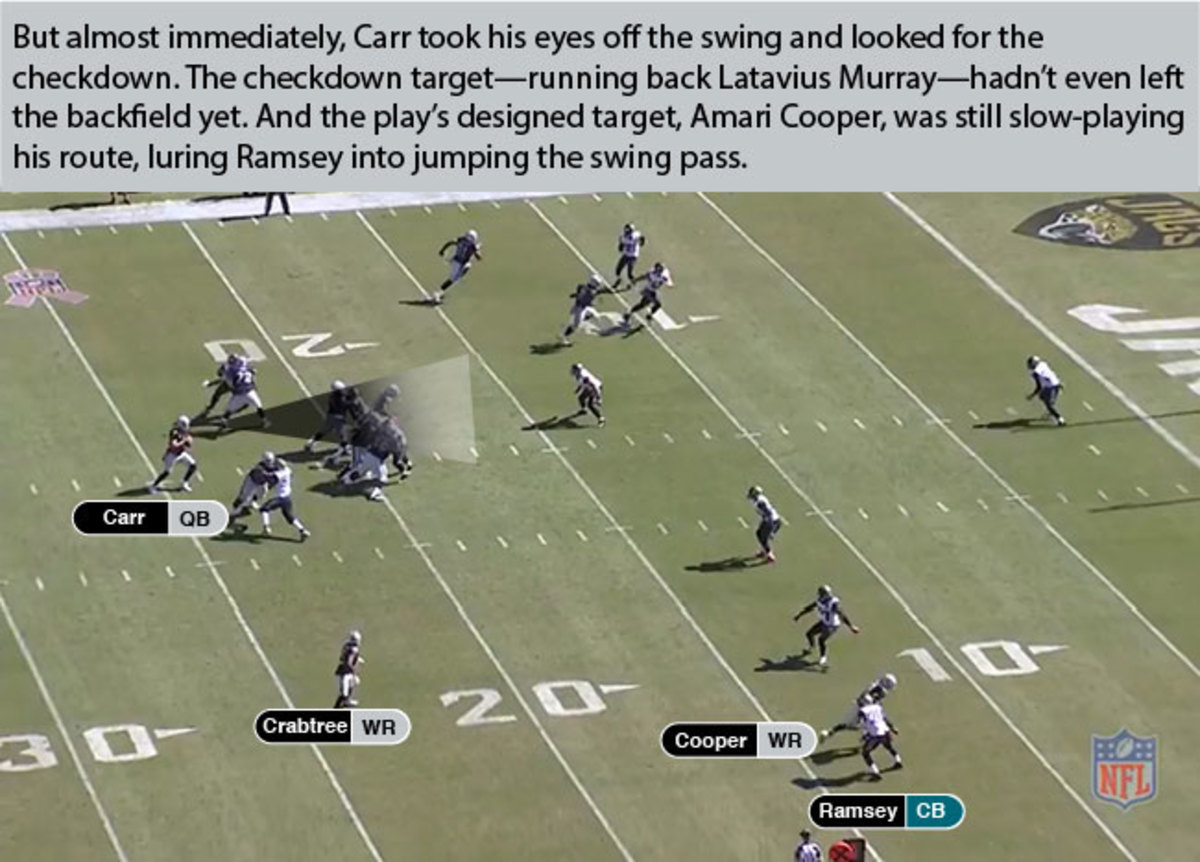
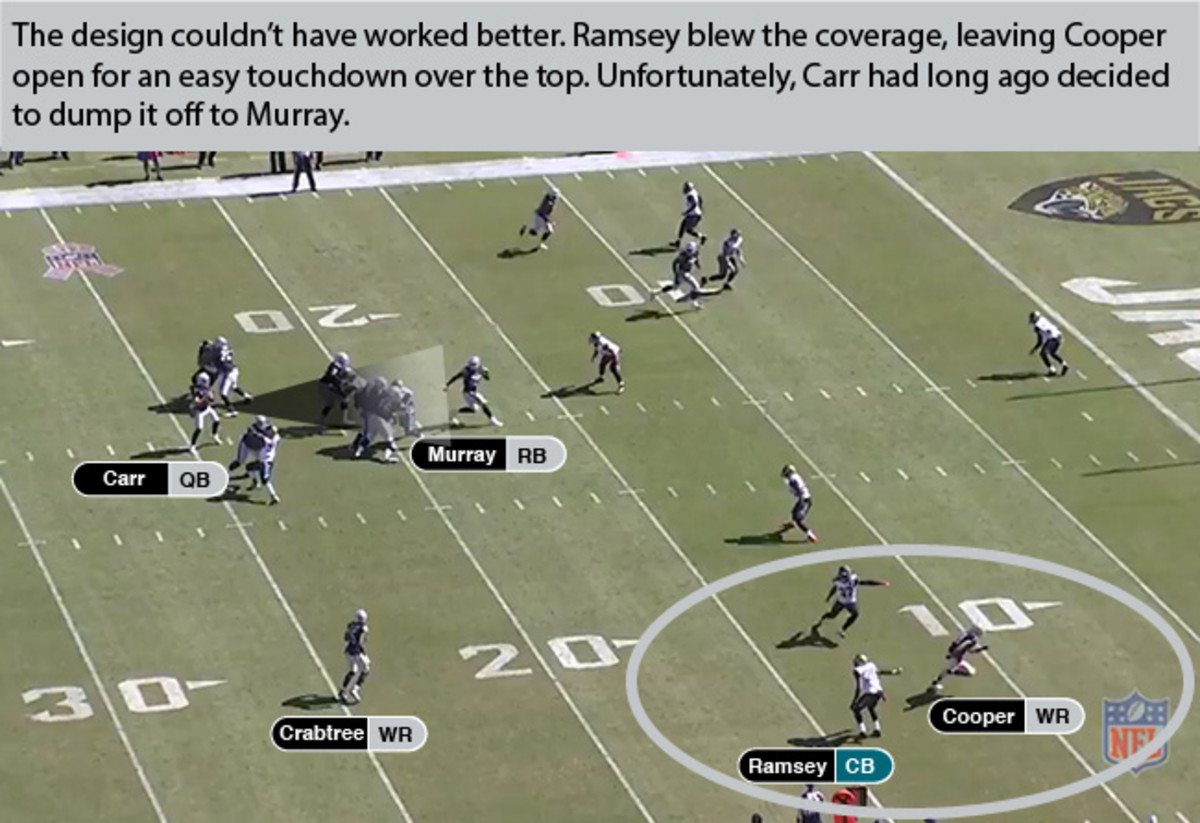
This happened on first-and-10, a scenario in which a quarterback should never anticipate being under pressure. There was no reason for Carr to accelerate his mental process here.
Given the handful of plays like this that Carr has had each week, it’s fair to say that his results have been positive in terms of wins and statistics, but his process has been too shaky for the Raiders’ success to be sustained. Carr must improve or 2016 will ultimately go down as just a fun first half of the season for Oakland.
If Carr picks up where he left off against Tampa Bay last week, the Raiders will be fine. In that game his footwork and pocket mobility were calm and smooth, perhaps to the point of flawless. And, probably not coincidentally, his decision-making was much more consistent.
But the Raiders were 5-2 even before Carr went off. That’s a credit to the coaches who have adroitly navigated its quarterback’s ups and downs. Bill Musgrave, the veteran offensive coordinator, trusts Carr to run an expansive, variegated scheme. Just like last season, the Raiders have one of the most diverse arrays of personnel packages and formations in all of football.
Musgrave thinks highly of Carr’s football IQ and trusts him to run, in essence, a multitude of different systems. It’s not uncommon to see the Raiders, in the span of a few drives, spread out with three or four receivers and throw quick strikes and screens, then go to two backs and two tight ends and pound the ball, or run play-action. And they have myriad personnel groupings and designs that fall in between these packages.
When you change up your looks so acutely, you tend to draw predictable coverages. Think about it from the defense’s perspective: you’re facing an offense that does a litany of things, but practice time is finite. You can’t devise a special plan for everything. And so you identify a handful of formations that you’re going to defend the same way as you did earlier in the year against a similar team. That way you’re at least calling something your players have worked on before.
The problem for the defense is that these decisions are evident on film. Musgrave and his staff see these tendencies and scheme ways to exploit them. The beneficiary is usually Amari Cooper, already the NFL’s most patient (and maybe diverse) route runner.
A great illustration of Musgrave using a formation wrinkle to create opportunities for Cooper came against the Falcons in Week 2.
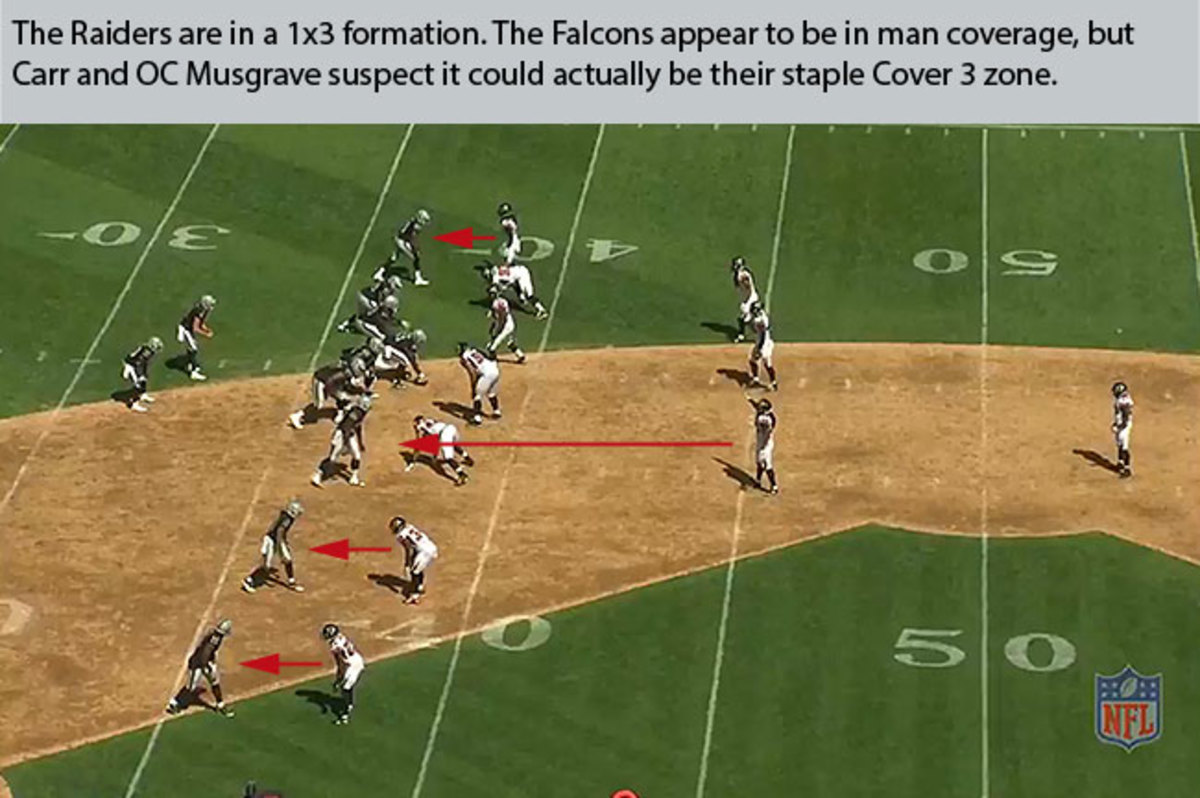
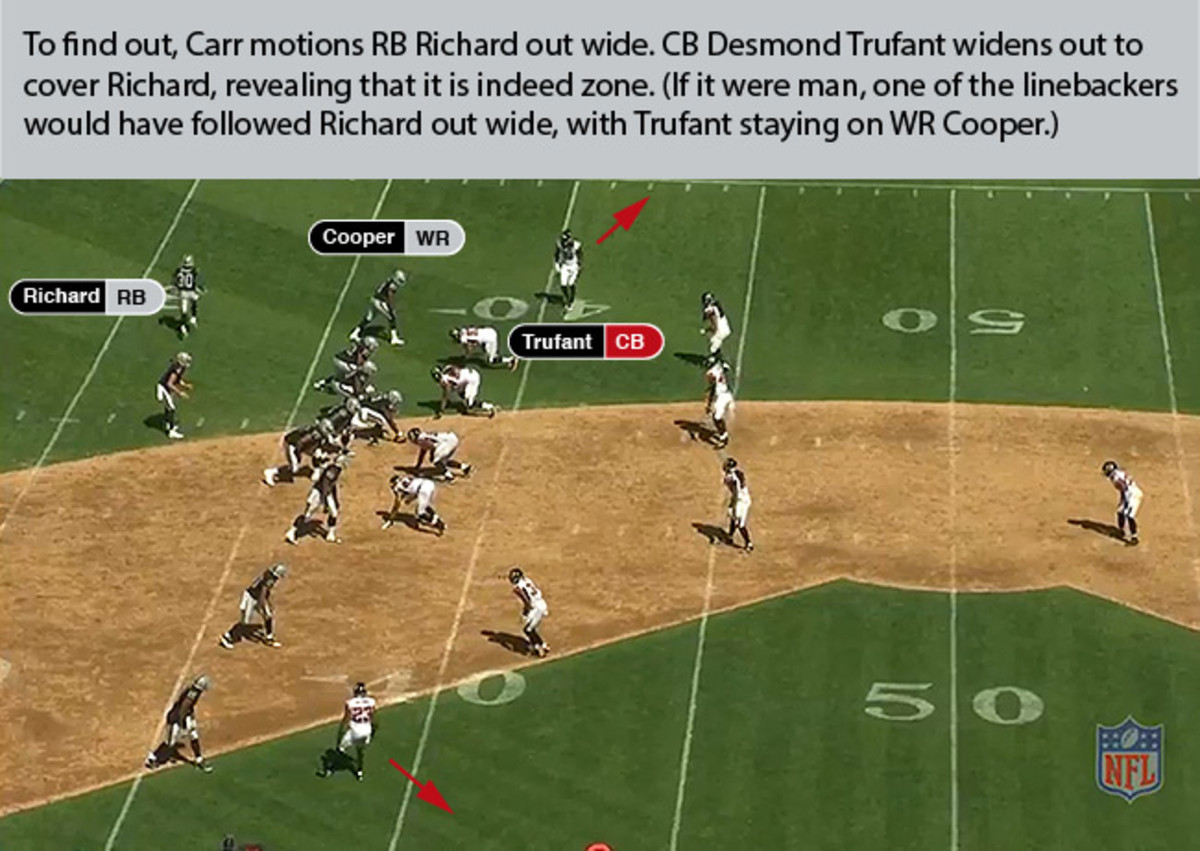
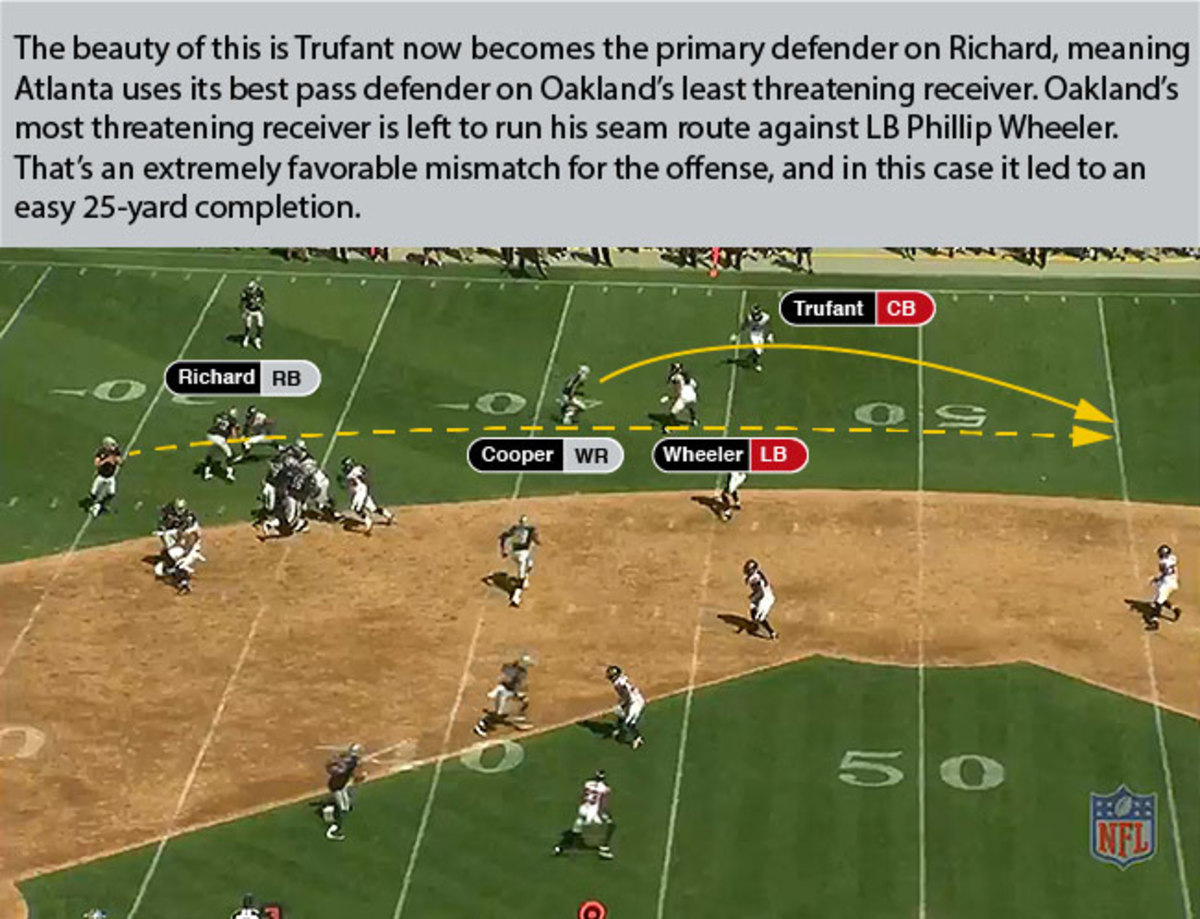
The blockers who give Cooper and Carr time to execute these sort of designer plays are also helped by Musgrave’s system. Many believe Oakland’s offensive line is the AFC’s best. And maybe it is. With size and mobility inside (guards Kelechi Osemele and Gabe Jackson, and center Rodney Hudson), it’s a group capable of all forms of run blocking, from inside zone, where power is king; to outside zone, where mobility rules; and on pull-blocks, where vision and coordination are imperative. This versatility is important because Oakland’s backs are all runners who need the aid of quality blocking. Latavius Murray, DeAndre Washington and Jalen Richard aren’t space-creators or tackle-breakers.
When it comes to pass blocking, however, we really don’t know how good Oakland’s O-line is. Musgrave’s scheme hides the line. When the Raiders spread out, Carr’s quick release is often enacted no later than at the top of a three-step drop. When the Raiders condense their formation and feature extra backs and tight ends, those backs and tight ends are almost always used as additional pass protectors. And if it’s not a back or a tight end, then it’s probably Denver Kirkland, who has played more than 23% of the snaps over the past four games as the Raiders’ sixth offensive lineman on the field. Because the Raiders’ blocking schemes naturally employ extra bodies, Musgrave doesn’t have to change very much schematically with Kirkland in the lineup.
The sets that employ six linemen are just another layer of diversity in this offense. With so many of those layers working well, the Raiders have a chance to go as far as their current record suggests they can. Assuming, of course, that their young quarterback steps up his game.
• Question? Comment? Story idea? Let us know at talkback@themmqb.com
